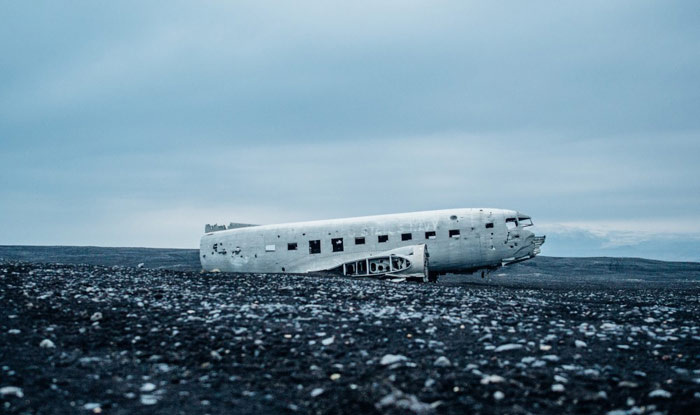Forewarned means forearmed. Read the instructions carefully and be prepared for anything.

In relation to the recent events, the rules of conduct during a terrorist attack and the threat of its commission are extremely relevant. There are quite numerous options of different emergencies, but there are also universal patterns of behavior during a terrorist attack, which we will now consider in detail.
Precaution measures
Terrorist attacks often occur in public places: in public transportation, at markets and stores, during major events both in closed areas and in the open air. As long as an emergency mode or terrorist threat is not declared, we cannot recommend abstaining from visiting such places. However, there are some precautions to ensure your safety. For example, it is desirable to avoid crowds. You should not stand next to windows and other easily destroyed structures. Abandoned cars, small cubbyholes between stalls or buildings can also pose a certain risk. In public transportation, it is best to choose a counter-movement seat in the middle of the passenger compartment. And again, away from the windows (however, be aware of the emergency exit windows). By the way, standing people are safer than sitting ones.
In crowded places, you need to pay special attention to any forgotten items, suspicious bags, and boxes without owners. Do not hesitate to approach the police and point to the suspicious object.
Signs of explosive devices:
- Unknown cars parked near the house.
- Wires, a small antenna, tape.
- Noise emitted by the detected object (clock ticking or clicking).
- Sources of power supply (batteries) seen on the found objects.
- A stretched wire, twine, or rope.
- An unusual placement of the detected object.
- A specific smell that is not characteristic of the surrounding area.
- Abandoned briefcases, suitcases, bags, folded packages, or boxes.
All suspicious objects in potentially crowded places must be reported to the administration and the security services. You should clearly and consciously say where and at what time the object has been found; indicate your contact information. Then, you need to wait for the arrival of the investigation team. The rest is the business of intelligence services.
Actions in case of a terrorist attack: executives’ duties
In case of a warning about a possible terrorist attack via mass media or civil defense tools (siren to inform you about the need to listen to the radio or television on local frequencies/channels), you need to safely and quickly leave the dangerous place without creating panic, and avoid mass gatherings.
Where to run? Home. Best of all use land transport, avoid the crowds, large shopping centers, factories, railway stations. If possible, you need to create a three-day supply of water, food, medicines and spare light sources, collect the documents and prepare for possible evacuation. In addition, it is necessary to remove all objects from the window sills, windows, get rid of all combustible materials. If the curtains are drawn, they will provide protection from splinters. Of course, it would be great to leave the big city for a few days – for example, to visit the relatives in the village, but it can be problematic, if not impossible.
What if the attack has already taken place
The main purpose is to survive and not to get injured. The accompanying goals are to call the security services and to save others. To do it, perform three tasks, strictly observing the order:
- Stand up. Look around. Is there any danger?
- Is there anyone injured? Take them away. Not reacting? Check their consciousness.
- Are the injured unconscious? Check their breathing. If they are breathing – save them.
- You must not start doing anything if you do not understand how to finish it and what the consequences will be. In order to save others, you need to survive.
Evacuation
It does not matter how you evacuate. The main thing is to do it quickly. Everything else can wait. First you need to leave the danger zone. It is better to deal with wounds and injuries in a safe place.
In the case of an organized evacuation, you should strictly and calmly follow the administration’s, driver’s or intelligence agency’s instructions.
You should avoid the crowds, but if there is no possibility to escape, submit to the flow and follow it without opposing: however, try to slip from it in a safe direction. Move with your elbows slightly apart. Be sure to get rid of any items that can get hooked. You should avoid places where you can get sandwiched and overcome any obstacles as carefully as possible. In such situations, a crowd can kill far more people than an attack.
If, however, you fell down, you need to curl up into a ball and cover your head with your hands, roll away to a safe place and get up as soon as possible.
If you are evacuating the wounded, the best way to transport them is to drag them by the arms behind you. This is the least labor-intensive way when the head is relatively safe. Although, in a critical situation, where there is a risk of fire or an explosion, even dragging by one leg, face down, is better than nothing.
First aid
The most dangerous injury is heavy bleeding and breathing problems. And you need to deal with them in the same order: first, minimizing blood loss, then – dealing with lack of oxygen. All the other injuries are either not so serious or can be treated without special medical training.
The victims are divided into three categories:
- Conscious, breathing – stop the bleedings (if any), help take a comfortable position.
- Unconscious, breathing – put to one side, stop heavy bleedings.
- Unconscious, not breathing – start cardiopulmonary resuscitation.
It would be useful to sign up for a one-day first aid course, to “refresh” your knowledge in this area. Or at least watch the corresponding video in the Internet. You never know when it might come in handy.
It is necessary to determine who to rescue first. You cannot help everyone at the same time, so it’s where triage applies. First, save those who are breathing but have multiple injuries, have lost a lot of blood and are unconscious. Second in line are the conscious victims. Those who are conscious and able to move receive help in the last turn. It may seem cruel, but all those who are unconscious and not able to breathe, should get medical help. In emergency situations, when time is precious, it is better to help those whose lives can definitely be saved.
All victims must be inspected for severe bleedings. Then, find the source and firmly press the wound with your hand or any piece of material or item of clothing. You must not remove foreign objects from the wounds, including fragments and cold steel arms. Their presence in some way closes the bloodstream. Strong, gushing bleeding should be stopped using any materials at hand. A tourniquet can be made of wire or even a shirt, a pressure bandage – in a similar way. The material cleanness does not matter: a strong loss of blood would kill a lot faster and more probably. First, stop – and then, bandage.
In case of a severe forearm or wrist bleeding, you should bend the elbow as hard as possible; with foot and lower leg bleeding – bend the leg at the knee joint. With thigh bleeding, a tourniquet is applied to the leg below the groin; with shoulder bleeding – just below the shoulder joint.
When the head is wounded, place the victim horizontally and ensure peace. The wound of the head (excluding face injuries) should not be touched. If the face is injured, you need to press the wound with sterile gauze, cloth or handkerchief.
When the victim has spinal injuries, do not allow them to move, put them down and do not disturb until the arrival of doctors.
With chest and abdomen wounds, it is necessary to apply an airtight bandage on the wound – a piece of gauze with boric ointment or petroleum jelly, a piece of polyethylene – to prevent the air from getting into the pleural and abdominal cavities. In the worst-case scenario, firmly clamp the wound with your hand. The victim must be in a semi-sitting position.
After you stopped the bleedings and put the unconscious to the side, you can deal with burns. In an emergency, all that you can do before the arrival of doctors is to cool the affected tissue. You can either pour water on it, or put a wet rag over it (preferably in a packet).










